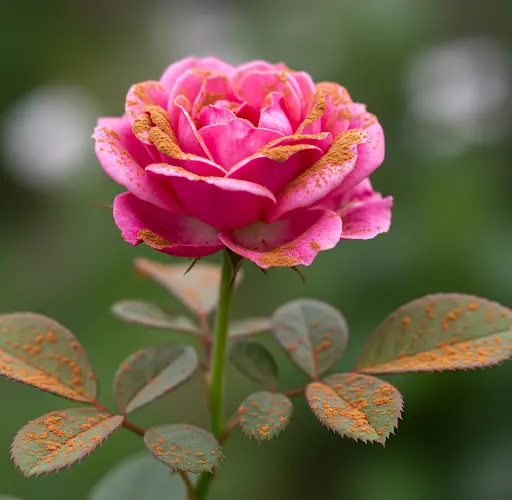Roses are among the most beloved and iconic flowers in the world. Their elegant form and alluring fragrance make them a must-have in gardens, patios, and balconies. Yet, growing roses from cuttings can be a challenge if you’re relying on water or soil alone without the proper support. Fortunately, there’s a surprisingly simple and natural solution to increase the success rate of rose propagation: cinnamon powder.
Yes, the same common spice you might use in your kitchen can do wonders in the garden. Cinnamon is not only antifungal and antibacterial but also a natural rooting stimulant. By incorporating cinnamon into your rose propagation process, you can help your cuttings root faster, stay healthy, and blossom beautifully all year round.
Why Use Cinnamon Powder for Rose Propagation?
Cinnamon is a powerhouse in plant care. While it’s known for its culinary uses, it offers several practical benefits in gardening, especially for propagation:
-
Natural Rooting Agent: Cinnamon stimulates root growth in many types of plant cuttings, including roses. It acts similarly to commercial rooting hormones.
-
Fungal Protection: The antifungal properties of cinnamon help prevent root rot and fungal infections, which often destroy delicate cuttings.
-
Antibacterial Benefits: It shields the plant from bacterial threats that can hinder successful rooting.
-
Pest Deterrent: Cinnamon also repels some common garden pests, including ants and gnats, helping new cuttings stay pest-free.
This natural and cost-effective ingredient can dramatically increase your success rate when growing roses from cuttings.
What You’ll Need
-
Fresh, healthy rose cuttings (6–8 inches long)
-
Ground cinnamon powder (not cinnamon sticks)
-
Sharp garden shears or a knife
-
Clean glass or jar (for water rooting) or a pot with well-draining soil
-
Plastic bag or clear container (optional, to create humidity)
-
Clean water and/or organic potting mix
Step-by-Step: How to Use Cinnamon to Propagate Roses
1. Take the Right Rose Cutting
Start by selecting a healthy stem from a mature rose bush. The ideal cutting is about 6–8 inches long and taken from semi-hardwood—the part of the stem that is not too young (green) or too old (woody).
Cut just below a leaf node (the bump where a leaf grows), and remove all flowers and lower leaves. Leave only one or two small leaves at the top to reduce moisture loss while allowing photosynthesis.
2. Dip the Cutting in Cinnamon Powder
After preparing the cutting, dip the cut end into cinnamon powder. You don’t need to cover the whole stem—just the bottom 1–2 inches is enough. Make sure the powder coats the entire wound area thoroughly.
The cinnamon will act as a natural rooting hormone and antiseptic, protecting the cutting while encouraging root development.
3. Choose a Rooting Method
You can now choose between two methods: soil rooting or water rooting.
Option A: In Soil
Prepare a small pot with moist, well-draining potting mix. Use a pencil or stick to make a hole in the center so the cinnamon doesn’t rub off when inserting the cutting. Gently place the cutting into the hole and press the soil lightly around it. Water lightly to settle the soil.
Option B: In Water
Place the cinnamon-coated cutting into a glass of clean water. Make sure only the part of the stem below the cinnamon layer is submerged. Change the water every 2–3 days to keep it fresh and prevent bacterial growth.
4. Create a Humid Environment
Rose cuttings root best in a warm, humid setting. To simulate this, cover the pot or glass with a clear plastic bag or bottle with holes for ventilation. This mini greenhouse traps moisture and warmth, which supports quicker root formation.
Place the cutting in a bright location with indirect sunlight. Avoid harsh, direct sun during this stage as it can dry out the cutting or overheat the enclosed space.
5. Monitor and Maintain
In about 10 to 14 days, you may notice new growth—either tiny leaf buds or visible white root tips (if propagating in water). This indicates that the cutting is successfully rooting.
Continue to water the cutting lightly if using soil, and once roots are at least an inch long (in either method), the new rose plant can be transplanted into a larger pot or directly into the garden.
Extra Tips for Success
-
Use fresh cinnamon: Spices lose potency over time, so make sure your cinnamon powder is not stale.
-
Avoid overwatering: In soil, too much moisture can lead to rot, even with cinnamon’s antifungal benefits.
-
Don’t overcrowd: If propagating multiple cuttings, space them to allow airflow and prevent mold.
-
Try combining with honey or aloe vera: For even more rooting power, you can coat the cutting with honey first, then dip it in cinnamon.
Conclusion
Cinnamon isn’t just for baking—it’s a powerful tool for natural rose propagation. Its rooting properties, combined with antifungal and antibacterial effects, make it an ideal helper in your gardening toolkit. With just one kitchen ingredient and a little care, you can enjoy an abundant, blooming rose garden all year round.
If you’ve never tried propagating roses before, this cinnamon method is a great place to start. Simple, natural, and effective—you’ll be amazed by the results!



